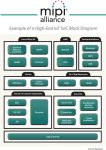My first job out of college was with Intel, located in Aloha, Oregon and I did circuit simulations using a proprietary SPICE circuit simulator called ASPEC that was maintained in-house. While doing some circuit simulations one day I noticed that an internal node in one of my circuits was gradually getting higher and higher, even… Read More
Tag: synopsys
Synopsys Hosting Formal Methods in CAD Conference Next Week
FMCAD (Formal Methods in Computer Aided Design) is a technical conference with a 20-year pedigree. This is a conference for serious formal methods teams. Key notes are from Berkeley and UCLA, committee members are all formal heavyweights and best I can tell, there is no exhibitors area.… Read More
Getting out of DIY Mode for Virtual Prototypes
Virtual prototyping has, inexplicably, been largely a DIY thing so far. Tools and models have come from different sources with different approaches, and it has been up to the software development team to do the integration step and cobble together a toolchain and methodology that fits with their development effort.
That integration… Read More
Power-Aware Debug to Find Low-Power Simulation Bugs
When I worked at Intel designing custom chips my management would often ask me, “Will first silicon work?” My typical response was, “Yes, but only for the functions that we could afford to simulate before tape-out.” This snarky response would always cause a look of alarm, quickly followed by a second … Read More
Did My FPGA Just Fail?
Designing DRAMs at Intel back in the 1970s I first learned about Soft Errors and the curious effect of higher failure rates of DRAM chips in Denver, Colorado with a higher altitude than Aloha, OR. With the rapid growth of FPGA-based designs in 2016, we are still asking the same questions about the reliability of our chips used for safety-critical… Read More
Catching low-power simulation bugs earlier and faster
I’ve owned and used many generations of cell phones, starting back in the 1980’s with the Motorola DynaTAC phone and the biggest usability factor has always been the battery life, just how many hours of standby time will this phone provide and how many minutes of actual talk time before the battery needs to be recharged… Read More
MIPI DevCon 2016: Opened to non-MIPI Members!
The MIPI Alliance was founded in 2003 by large IDM to standardize chip-to-chip interfaces in the wireless phone (mobile) segment. The various MIPI specifications (CSI, DSI, DigRF and many more) have been adopted by the application processor chip makers (usually large IDM or fabless, like Intel or Qualcomm initially and many … Read More
10nm Will Be an Epic Process Node!
In the history of the fabless semiconductor industry the foundries have always been a process node or two behind the leading semiconductor manufacturers. Starting in Q1 2017, for the first time in fabless semiconductor history, the foundries will have a process node advantage. This is horrible news for some but great news for … Read More
IC and System Design for Mobile and Wearable Devices!
The Linley Mobile and Wearable Conference is coming up so let’s take a look at what is in store for us. Bernard Murphy, Tom Simon, and I will be covering the event live for SemiWiki and we will also be doing a book giveaway/signing for our new “Prototypical” book (compliments of S2C Inc.) during the networking event on Tuesday evening.… Read More
Learn How to Debug UVM Test Benches Faster – Upcoming Synopsys Webinar
UVM for developing testbenches is a wonderful thing, as most verification engineers will attest. It provides abstraction capabilities, it encapsulates powerful operations, it simplifies and unifies constrained-random testing – it has really revolutionized the way we verify at the block and subsystem level.
However great… Read More









